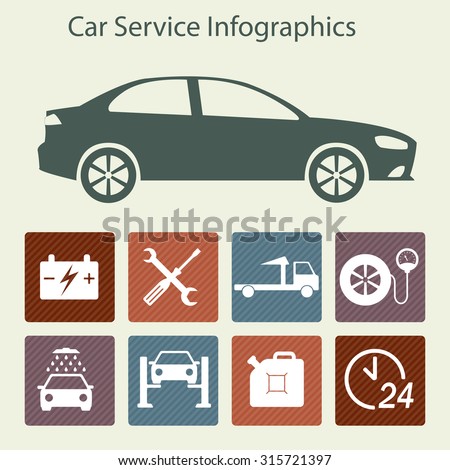Grasping The Significance Of Your Automobile'S Warning Signals: What They Actually Stand For
Grasping The Significance Of Your Automobile'S Warning Signals: What They Actually Stand For
Blog Article
Material Written By-Lim Alvarado
When you're behind the wheel, those radiant caution lights on your dashboard can be a little bit bewildering. Do you understand what they're trying to inform you concerning your automobile's wellness? Comprehending the relevance of these lights is important for your safety and the longevity of your automobile. So, the next time among those lights pops up, wouldn't you wish to understand its message precisely and take the needed actions to resolve it?
Common Warning Lights and Interpretations
Identify typical warning lights in your automobile and comprehend their definitions to guarantee safe driving.
One of the most common caution lights consist of the check engine light, which indicates issues with the engine or exhausts system. If this light comes on, it's vital to have your automobile checked immediately.
The oil stress advising light shows low oil pressure, requiring instant attention to avoid engine damage.
hand wash car flashing battery light may recommend a faulty charging system, possibly leaving you stranded if not resolved.
aucklandcarcleaning monitoring system (TPMS) light notifies you to reduced tire pressure, impacting automobile stability and fuel efficiency. Overlooking this can bring about hazardous driving problems.
The ABS light suggests a trouble with the anti-lock braking system, jeopardizing your capability to quit swiftly in emergency situations.
Last but not least, the coolant temperature level advising light warns of engine getting too hot, which can cause serious damages if not resolved swiftly.
Recognizing these usual warning lights will certainly help you address problems promptly and preserve risk-free driving conditions.
Importance of Prompt Focus
Understanding the typical warning lights in your car is only the very first step; the significance of immediately attending to these warnings can not be highlighted enough to ensure your safety and security on the road.
When a caution light brightens on your dashboard, it's your auto's way of connecting a possible problem that needs interest. Ignoring these cautions can cause more serious troubles down the road, jeopardizing your safety and security and potentially costing you much more out of commission.
Prompt interest to cautioning lights can avoid breakdowns and mishaps. As an example, a blinking check engine light might show a misfire that, if left neglected, might create damages to the catalytic converter. Resolving this quickly can save you from a pricey fixing.
Similarly, a brake system alerting light might indicate low brake liquid or worn brake pads, important components for your safety when driving.
Do It Yourself Troubleshooting Tips
If you discover a caution light on your dashboard, there are a few do it yourself troubleshooting suggestions you can try before seeking professional assistance.
The primary step is to consult your automobile's handbook to understand what the details warning light suggests. Often the problem can be as basic as a loosened gas cap setting off the check engine light. Tightening the gas cap might solve the trouble.
Another usual concern is a low battery, which can trigger different cautioning lights. Checking the battery links for rust and guaranteeing they're secure might deal with the issue.
If a caution light lingers, you can attempt resetting it by separating the auto's battery for a couple of mins and after that reconnecting it. In addition, checking your car's liquid degrees, such as oil, coolant, and brake fluid, can aid troubleshoot advising lights related to these systems.
Verdict
Finally, comprehending your cars and truck's warning lights is necessary for maintaining your car running efficiently and safely. By promptly dealing with these notifies and knowing what they imply, you can avoid costly repairs and prospective break downs.
Remember to consult your automobile's handbook for particular information on each advising light and act accordingly to make sure a trouble-free driving experience.
Keep informed, stay safe when driving!
